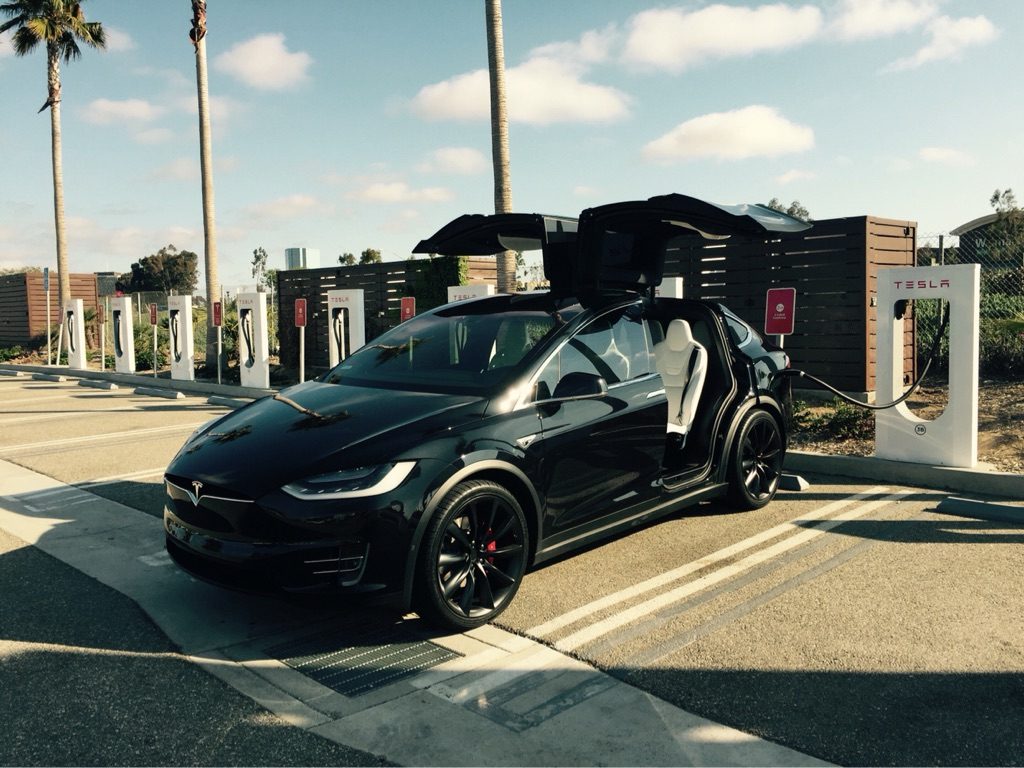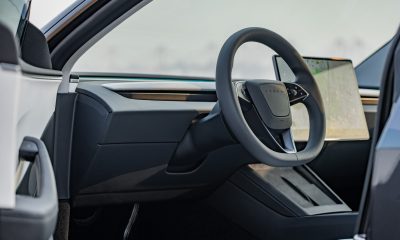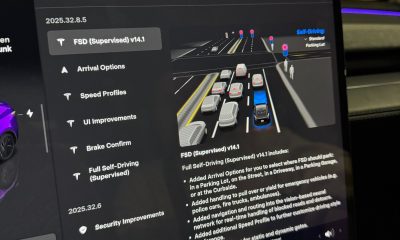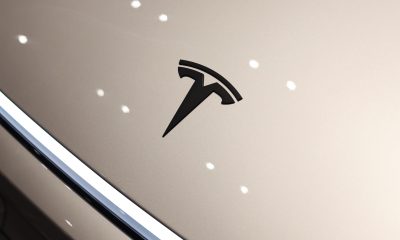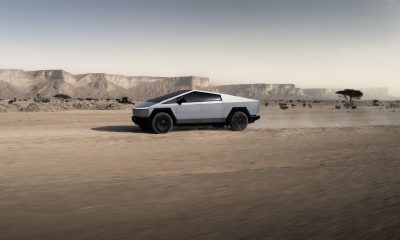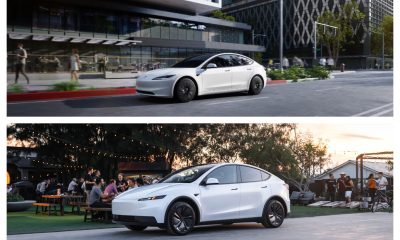Lifestyle
Top 5 ideas on how to alleviate Tesla Supercharger congestion [Poll]
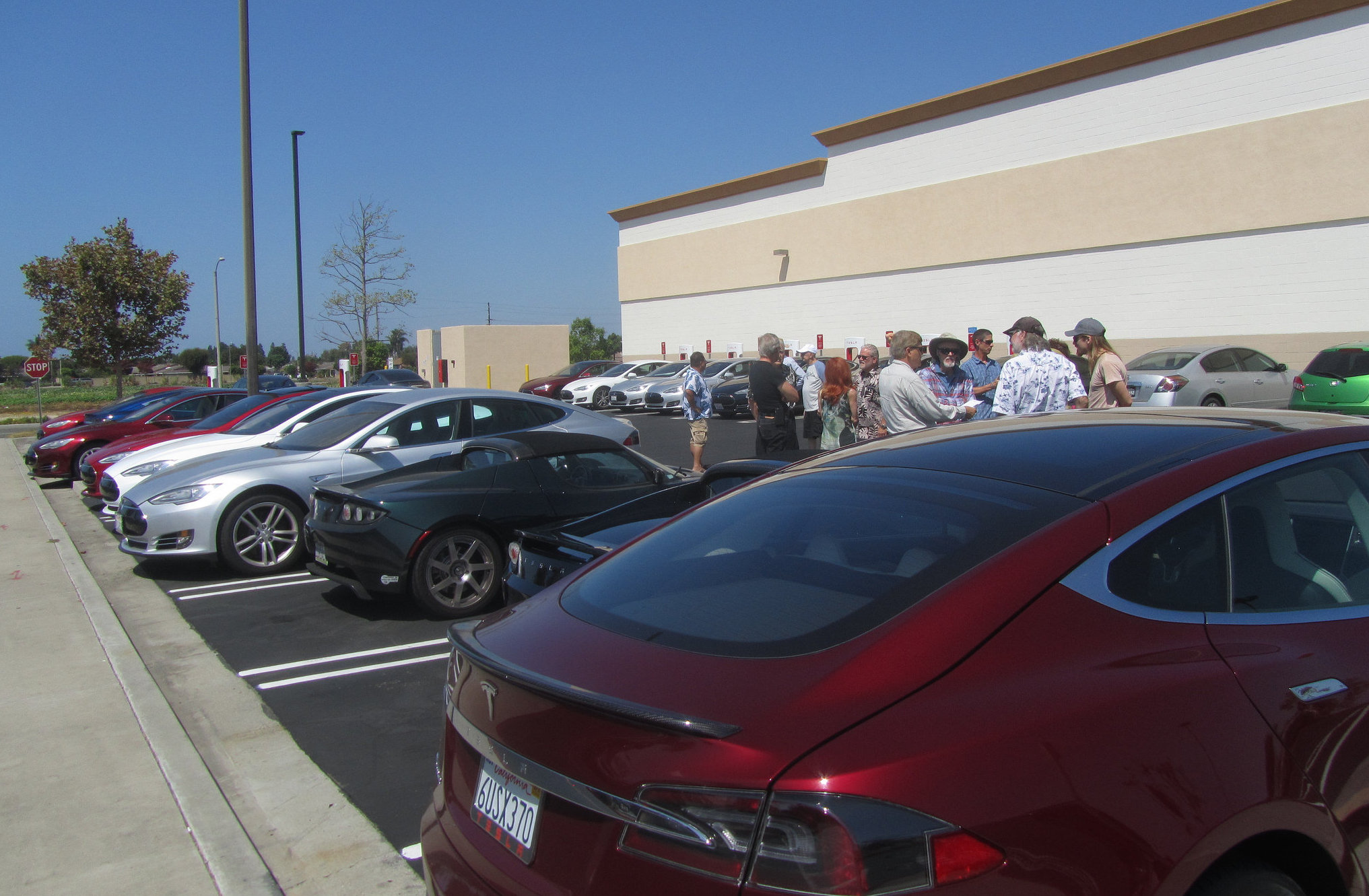
In a perfect world of shiny, happy, Tesla folks just knowing and practicing good etiquette would alleviate Supercharger congestion. But as we hear at least once every major travel holiday, some locations do experience congestion. To add to my previous post on 5 rules for proper use of the Tesla charging network, here are 5 ideas for how to alleviate Supercharger congestion that Tesla could themselves take.
1 – Supercharger Valet Service
An idea that is not as obvious, but that already been thought of, is to employ attendants at busy locations. This attendant can easily serve as a valet, moving cars when they have reached their desired state of charge. More than that, the attendant can serve as a psychological reminder that ‘hey, these chargers are in demand, so I’d better take only what I need and move along.’ From my understanding, the current model dictates that the attendant not act as a valet, meaning they do not take keys or move cars. Expanding this idea to allow it could certainly help to alleviate any congestion that is caused by users not getting back to move their cars by the time they have reached their desired state of charge.
Below is an example of how Tesla has partnered with Luxe to provide on-demand valet service. Surely this could be something they could also incorporate at Supercharger locations.
On-demand @luxevalet for #Tesla spotted in Santa Monica – https://t.co/DiiD2BKtW2 pic.twitter.com/tCF3ULW4N9
— TESLARATI (@Teslarati) April 9, 2016
2 – Have Dedicated “Express” Charging Stalls
I certainly can’t take credit for this, as I’ve heard it mentioned on the Tesla forums, but one idea is to dedicate a number of stalls as express stalls. These express stalls would include clear signage that indicates a time limit. 20 minutes, for example, could mean that those who intend a quick charge use those stalls specifically and those who need a quick charge wait in line for the express stalls. This would require an honor system, which certainly has its drawbacks, but again could serve as a psychological reminder that there is a demand for use here and occupying a space longer than you need it may inconvenience others.
3 – Publish Peak Usage Times
Speaking of Tesla’s plethora of data, they could also publish peak days and times for each Supercharger location. Memorial Day Weekend trips to the beach or the lake should go without saying, but certainly it can’t hurt for folks to be able to look up the busiest times for charger locations they plan on using. If you learned that a one hour adjustment to your travel plans would likely avoid a wait for a charger, you may very well adjust. Spreading out use away from peak times could benefit everyone.
4 – In-navigation Communication
Not to forget Tesla’s incredible OTA software updates and software prowess in general, let us consider in-navigation communication to other owners. That is, once the car knows you are parked very close to a Supercharger, there is an ability for you to answer ‘Yes’ or ‘No’ to the simple question of whether or not the stalls are all in use. If you select ‘Yes’ those currently plugged in will get a notification on their app that says others are waiting to charge. This notification needn’t be any more complex than the one that notifies you that you have enough charge to move on. I’m not even talking about enforcement here, just information that the receiver can choose to use or ignore. I’ve only ever encountered a full 8-stall location once. When I plugged in, there were at least 5 open stalls. When I returned to my car (a reasonable charging time later) all were full. No one was waiting but it goes to show how quickly a wait could have formed. Someone who takes longer to get back to his or her car because the location seemed empty may very well rush right back if they found out it was full.
5 – Build More Superchargers
And last but not least, building more Superchargers is no doubt the most obvious solution. Tesla has done an excellent job of this, with 266 locations open in the United States as of June 1, 2016 and 18 under construction. Many major routes have been enabled, which speaks to the oft-repeated premise that the charging network is meant to enable long distance travel. “Freedom,” as Elon described it in the 2016 shareholders meeting, is the ability to go anywhere and not be tethered to your charging location.
What’s less obvious is what I mean by building more. One of Tesla’s many competitive advantages is data. Fleet learning with Autopilot is a great example. We already know that the company has insight on which chargers get the most use. Logic says expand those locations, just as they have in Newark, Delaware. I implore they take it one step further and make use of a precious resource: current owners. Send a quick email to every owner who charged in Cabazon, CA this weekend, for example, and ask where they traveled to and from. Make the email a very easy-to-complete survey and leave an open comments space for location suggestions. It may not be practical to add more stalls at some of the most popular locations, but maybe there is another location along the same travel route that can be built.
Which of these options sounds good to you? Take the poll below to see what others are voting on:
https://twitter.com/ElectricJen/status/738185172277952517
Feature image courtesy of Dennis Pascual via Flickr
Lifestyle
Tesla Model S Plaid battles China’s 1500 hp monster Nurburgring monster, with surprising results
There is just something about Tesla’s tuning and refinement that makes raw specs seem not as game-changing.

The Tesla Model S Plaid has been around for some time. Today, it is no longer the world’s quickest four-door electric sedan, nor is it the most powerful. As per a recent video from motoring YouTube channel Carwow, however, it seems like the Model S Plaid is still more than a match for some of its newer and more powerful rivals.
The monster from China
The Xiaomi SU7 Ultra is nothing short of a monster. Just like the Model S Plaid, it features three motors. It also has 1,548 hp and 1,770 Nm of torque. It’s All Wheel Drive and weighs a hefty 2,360 kg. The vehicle, which costs just about the equivalent of £55,000, has been recorded setting an insane 7:04.957 at the Nurburgring, surpassing the previous record held by the Porsche Taycan Turbo GT.
For all intents and purposes, the Model S Plaid looked outgunned in Carwow’s test. The Model S Plaid is no slouch with its three motors that produce 1,020 hp and 1,420 Nm of torque. It’s also a bit lighter at 2,190 kg despite its larger size. However, as the Carwow host pointed out, the Model S Plaid holds a 7:25.231 record in the Nurburgring. Compared to the Xiaomi SU7 Ultra’s record, the Model S Plaid’s lap time is notably slower.
Real-world tests
As could be seen in Carwow’s drag races, however, Tesla’s tech wizardry with the Model S Plaid is still hard to beat. The two vehicles competed in nine races, and the older Model S Plaid actually beat its newer, more powerful counterpart from China several times. At one point in the race, the Xiaomi SU7 Ultra hit its power limit due to its battery’s temperature, but the Model S Plaid was still going strong.
The Model S Plaid was first teased five years ago, in September 2020 during Tesla’s Battery Day. Since then, cars like the Lucid Air Sapphire and the Xiaomi SU7 Ultra have been released, surpassing its specs. But just like the Model Y ended up being the better all-rounder compared to the BYD Sealion 7 and the MG IM6, there is just something about Tesla’s tuning and refinement that makes raw specs seem not as game-changing.
Check out Carwow’s Model S Plaid vs Xiaomi SU7 drag race video below.
Lifestyle
500-mile test proves why Tesla Model Y still humiliates rivals in Europe
On paper, the BYD Sealion 7 and MG IM6 promised standout capabilities against the Model Y.

BYD is seeing a lot of momentum in Europe, so much so that mainstream media has taken every opportunity to argue that the Chinese automaker has beaten Tesla in the region. But while BYD sales this year in Europe are rising and Tesla’s registrations remain challenged, the raw capabilities of vehicles like the Model Y are difficult to deny.
This was highlighted in a 500-mile challenge by What Car? magazine, which showed that the new Tesla Model Y is more efficient, cheaper to run, and more reliable than rivals like the BYD Sealion 7, and even the nearly 400 KW-charging MG IM6.
Range and charging promises
On paper, the BYD Sealion 7 and MG IM6 promised standout capabilities against the Model Y. The Sealion 7 had more estimated range and the IM6 promised significantly faster charging. When faced with real-world conditions, however, it was still the Model Y that proved superior.
During the 500-mile test, the BYD nearly failed to reach a charging stop, arriving with less range than its display projected, as noted in a CarUp report. MG fared better, but its charging speeds never reached its promised nearly-400 kW charging speed. Tesla’s Model Y, by comparison, managed energy calculations precisely and arrived at each stop without issue.
Tesla leads in areas that matter
Charging times from 25% to 80% showed that the MG was the fastest at 17 minutes, while Tesla and BYD were close at 28 and 29 minutes, respectively. Overall efficiency and cost told a different story, however. The Model Y consumed 19.4 kWh per 100 km, compared to 22.2 for MG and 23.9 for BYD. Over the full trip, Tesla’s charging costs totaled just £82 thanks to its supercharger network, far below BYD’s £130 and MG’s £119.
What Car? Magazine’s testers concluded that despite BYD’s rapid sales growth and the MG IM6’s seriously impressive charging speeds, Tesla remains the more compelling real-world choice. The Model Y just offers stability, efficiency, and a proven charging infrastructure through its Supercharging network. And as per the magazine’s hosts, the Model Y is even the cheapest car to own among the three that were tested.
Watch What Car? Magazine’s 500-mile test in the video below.
Lifestyle
Tesla Cybertruck slapped with world’s least intimidating ticket, and it’s pure cringe
One cannot help but cringe and feel second-hand embarrassment at the idea of a person just driving around with a stack of these babies.

A Cybertruck parked at Stanford Shopping Center in California was recently hit with what might be the most try-hard piece of paper ever slipped under a wiper blade: a “fake citation” accusing the driver of supporting a “fascist car.”
The note, shared on X by Tesla staff program manager Ryan Torres, quickly made the rounds on X, where it quickly gained attention as an example of how not to protest.
The world’s least intimidating ticket
According to the citation, the supposed “violation” was “driving a fascist car.” The remedial action? Take the bus, call an Uber, or ride a bike. The note also dubbed Elon Musk a “chainsaw-wielding Nazi billionaire.” Now, protests against Tesla and Elon Musk have become commonplace this year, but one cannot help but cringe and feel second-hand embarrassment at the idea of a person just driving around with a stack of fake anti-Tesla/Musk citations.
Torres pointed out the irony himself in his post on X. Tesla currently employs over 140,000 Americans, and SpaceX has put the U.S. firmly back at the top of space technology. As Torres put it, maybe the person behind the world’s least intimidating ticket should “read a book on innovation before vandalizing” other people’s property.
Peak performative clownery
Not to mention that the fake ticket’s logic collapses under its own weight. EVs like the Cybertruck are literally designed to reduce emissions, not “destroy the economy.” If anything, Tesla has bolstered the United States’ economy by fueling jobs in engineering, manufacturing, and clean energy. It’s not the first time a Tesla has been the target of vandalism or politically charged notes, but this one stands out for sheer cringe value.
Torres summed it up neatly: “Peak clownery.” On that point, at least, the citation earns full marks. In a way, though, perhaps cringe fake tickets are not as bad as the literal firebombs that were being thrown at Tesla stores and cars earlier this year because some critics were gleefully misinformed about Elon Musk.
-

 Elon Musk2 weeks ago
Elon Musk2 weeks agoTesla FSD V14 set for early wide release next week: Elon Musk
-
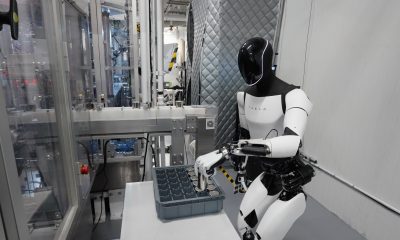
 News2 weeks ago
News2 weeks agoElon Musk gives update on Tesla Optimus progress
-
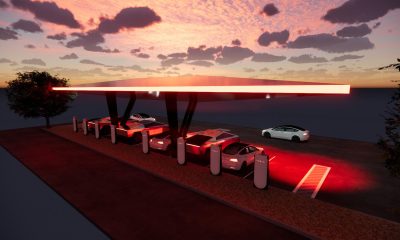
 News2 weeks ago
News2 weeks agoTesla has a new first with its Supercharger network
-
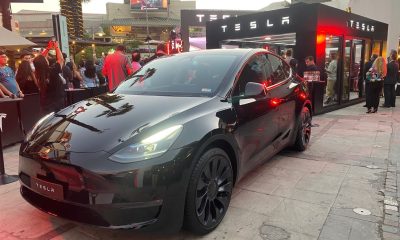
 News2 weeks ago
News2 weeks agoTesla job postings seem to show next surprise market entry
-
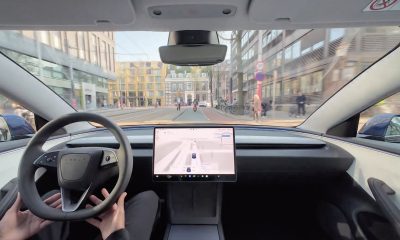
 Investor's Corner2 weeks ago
Investor's Corner2 weeks agoTesla gets new Street-high price target with high hopes for autonomy domination
-

 Lifestyle2 weeks ago
Lifestyle2 weeks ago500-mile test proves why Tesla Model Y still humiliates rivals in Europe
-
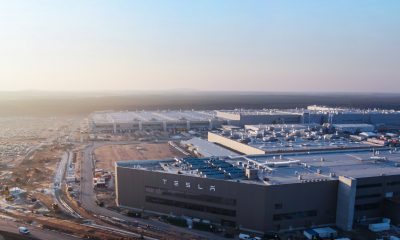
 News1 week ago
News1 week agoTesla Giga Berlin’s water consumption has achieved the unthinkable
-
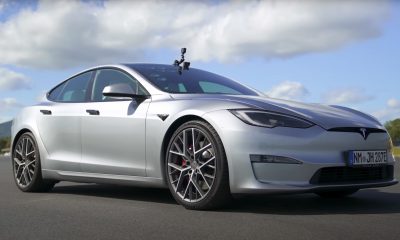
 Lifestyle2 weeks ago
Lifestyle2 weeks agoTesla Model S Plaid battles China’s 1500 hp monster Nurburgring monster, with surprising results

